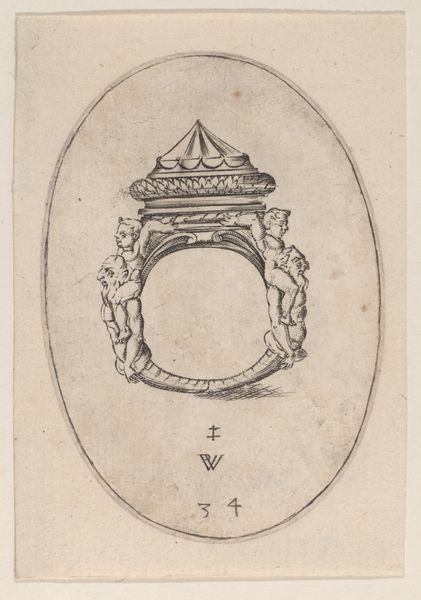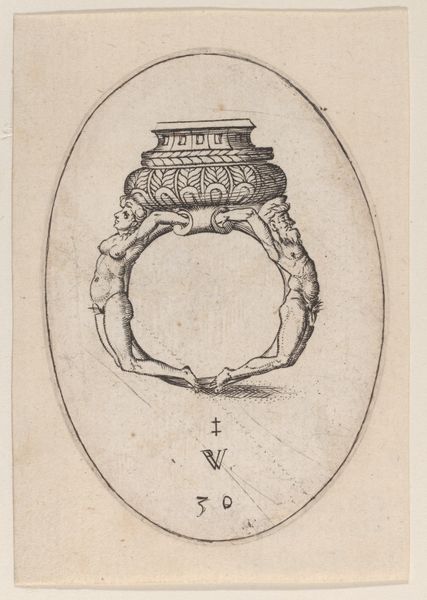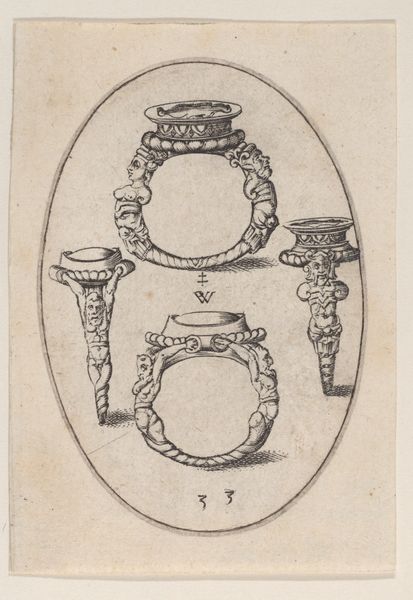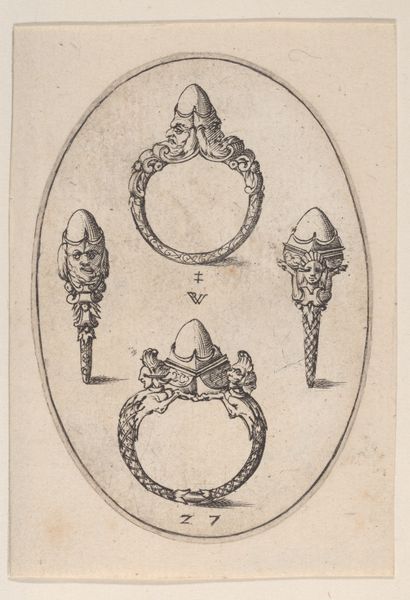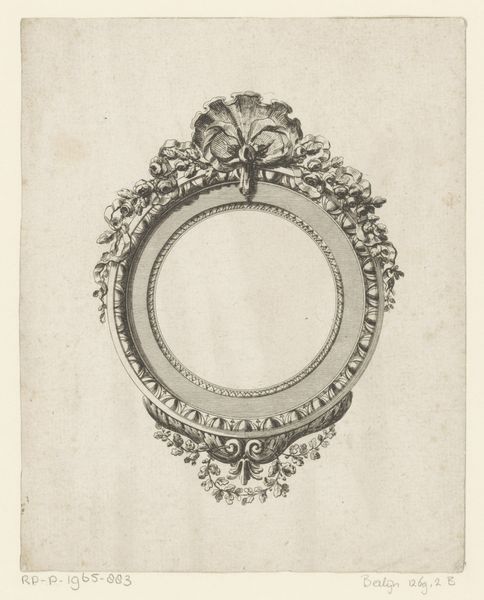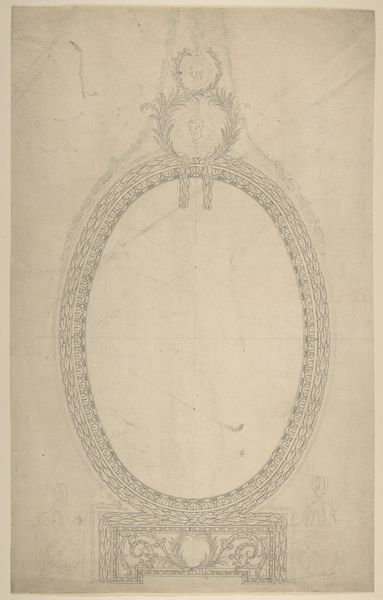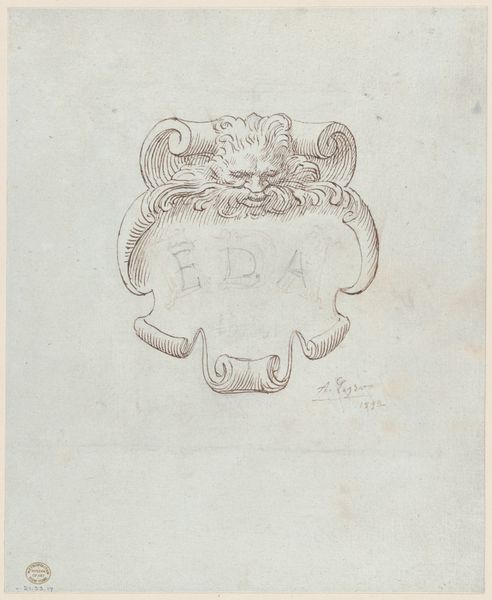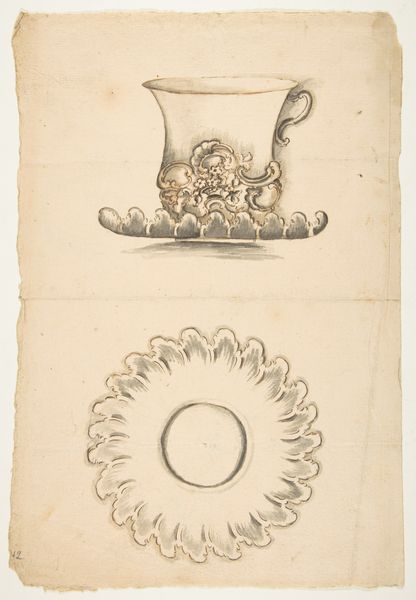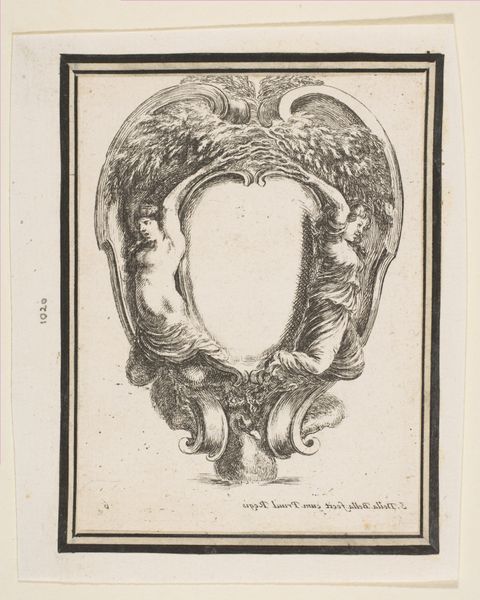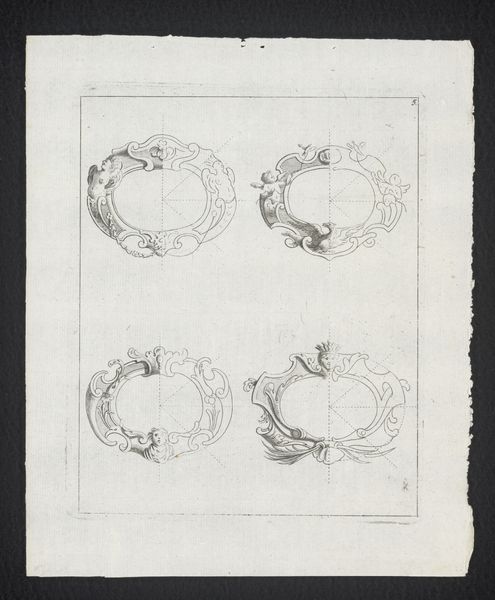
Design for a Ring, Plate 28 from 'Livre d'Aneaux d'Orfevrerie' 1561
0:00
0:00
drawing, print, metal, engraving
#
drawing
# print
#
metal
#
form
#
11_renaissance
#
geometric
#
line
#
northern-renaissance
#
engraving
Dimensions: Plate: 2 11/16 × 1 7/8 in. (6.8 × 4.8 cm) [oval plate] Sheet: 3 1/16 × 2 3/16 in. (7.8 × 5.5 cm) [cut]
Copyright: Public Domain
Curator: This intricate design before us is Plate 28 from 'Livre d'Aneaux d'Orfevrerie,' or Book of Goldsmith Rings. Pierre Woeiriot de Bouzey II created it in 1561. The print resides at the Metropolitan Museum of Art. Editor: Immediately, it feels weighty, like a secret code rendered in miniature. And those tiny beast heads… Are they lions, maybe? They give the design a stern, protective energy, almost like gatekeepers on a finger. Curator: Yes, those zoomorphic details were prevalent in Renaissance jewelry. They served as emblems. The ring's form evokes more than mere ornamentation. Editor: The band's also quite complex—it’s geometric and seems very intentional. Almost austere, yet elevated by those curious animal heads. I get the sense of something powerful restrained. Curator: You've hit upon something essential. Consider that the Renaissance was preoccupied with re-establishing classical aesthetics after the medieval era. Geometric shapes and lines, informed by humanist ideals, signified a return to order, logic, and a divine harmony underlying all things. Editor: Fascinating. It really does communicate balance. Is there a symbolic association with that weighty looking platform on top? It almost appears as though you could hold a miniature relic there. Curator: These “memento mori,” or "reminders of death" motifs were quite common at the time. Jewelry, particularly rings, provided a convenient space for tiny vanitas symbols that reminded their wearers to seek moral rectitude. Death as a motivator to make one’s time on earth more purposeful. Editor: So it’s like wearing a tiny conscience! The fine engraving lends itself so perfectly to that sense of preciousness and weighty responsibility, both the earthly wealth and that spiritual burden you've talked about. Curator: Precisely! This piece offers a tiny, perfect window into the Renaissance mindset. The wearer possessed a commitment to something more significant, expressed in tangible form. Editor: I find that so thought-provoking. In our current era, it makes you question the meanings we invest in objects today, particularly ones of status and what those stand for. Curator: A fruitful pondering for any age. Objects mirror our cultural values and enduring hopes for immortality.
Comments
No comments
Be the first to comment and join the conversation on the ultimate creative platform.
